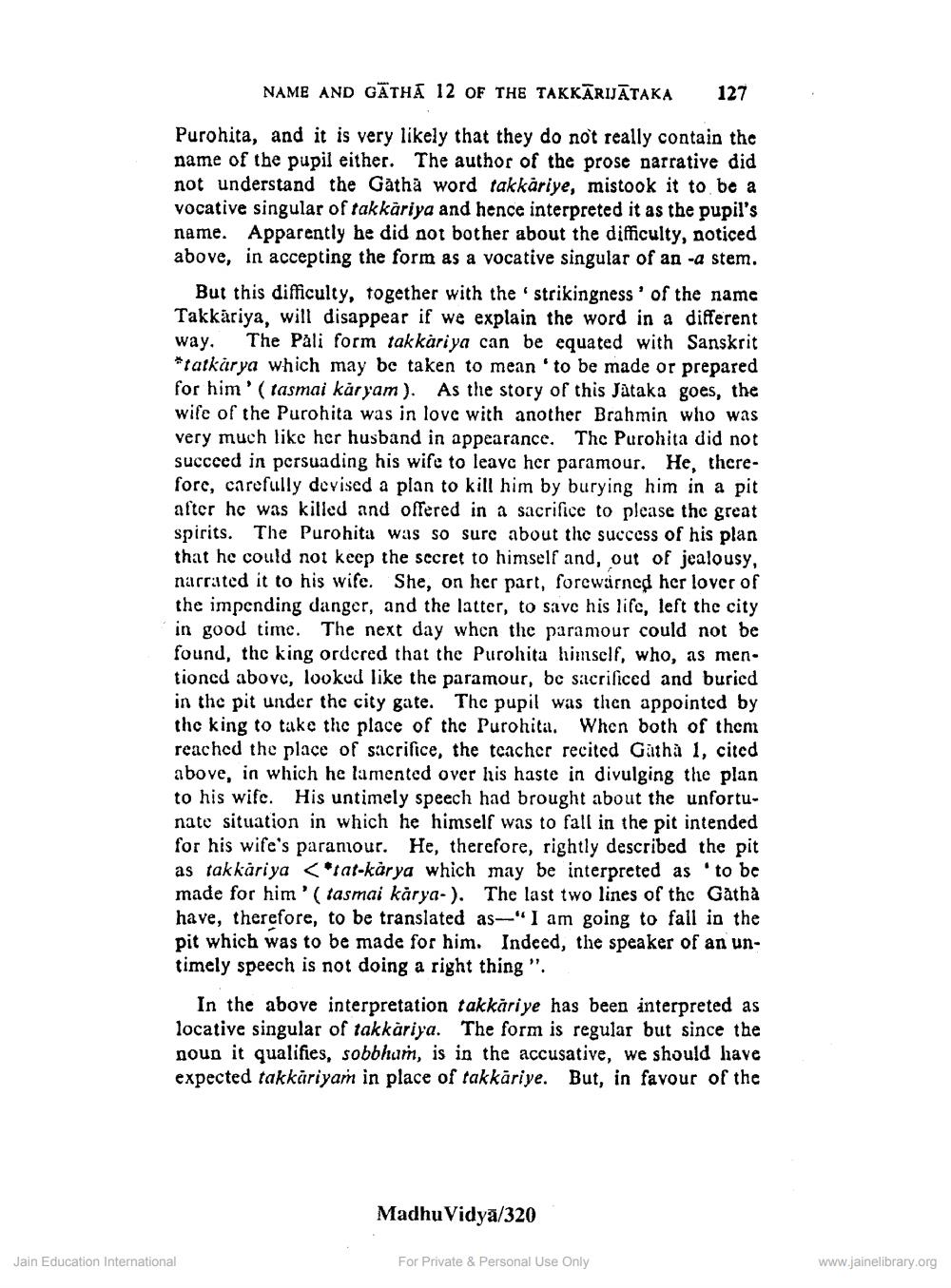________________
NAME AND GATHA 12 OF THE TAKKĀRIJĀTAKA
127
Purohita, and it is very likely that they do not really contain the name of the pupil either. The author of the prose narrative did not understand the Gatha word takkäriye, mistook it to be a vocative singular of takkäriya and hence interpreted it as the pupil's name. Apparently he did not bother about the difficulty, noticed above, in accepting the form as a vocative singular of an -a stem.
But this difficulty, together with the strikingness of the name Takkäriya, will disappear if we explain the word in a different way. The Pali form tak kariya can be equated with Sanskrit *tatkarya which may be taken to mean 'to be made or prepared for him ' (tasmai karyam). As the story of this Jataka goes, the wife of the Purohita was in love with another Brahmin who was very much like her husband in appearance. The Purohita did not succeed in persuading his wife to leave her paramour. He, thereforc, carefully devised a plan to kill him by burying him in a pit after he was killed and offered in a sacrifice to please the great spirits. The Purohita was so sure about the success of his plan that he could not keep the secret to himself and, out of jealousy, narrated it to his wife. She, on her part, forewarned her lover of the impending danger, and the latter, to save his life, left the city in good time. The next day when the paramour could not be found, the king ordered that the Purohita himself, who, as men. tioned above, looked like the paramour, be sacrificed and buried in the pit under the city gate. The pupil was then appointed by the king to take the place of the Purohita. When both of them reached the place of sacrifice, the teacher recited Gatha 1, cited above, in which he lamented over his haste in divulging the plan to his wife. His untimely speech had brought about the unfortunate situation in which he himself was to fall in the pit intended for his wife's paramour. He, therefore, rightly described the pit as takkariya < tat-karya which may be interpreted as 'to be made for him'( tasmai karya-). The last two lines of the Gatha have, therefore, to be translated as "I am going to fall in the pit which was to be made for him. Indeed, the speaker of an untimely speech is not doing a right thing".
In the above interpretation takkäriye has been interpreted as locative singular of takkariya. The form is regular but since the noun it qualifies, sobbhum, is in the accusative, we should have expected takkäriyam in place of takkāriye. But, in favour of the
Madhu Vidya/320
Jain Education International
For Private & Personal Use Only
www.jainelibrary.org




